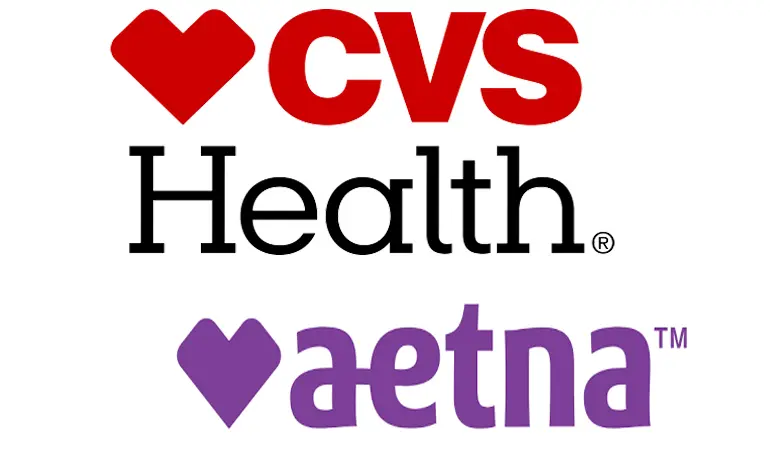Selecting the best health insurance plan is vital for your health and financial stability. In this guide, we’ll outline seven clear steps to help you through the selection process. From assessing your healthcare needs to exploring additional health benefits elsewhere, these insights will guide you toward a plan that perfectly suits your lifestyle and budget. Let’s begin the journey to find the optimal coverage for you and your family.
Understanding Health Insurance
Health insurance is a crucial safety net that covers the cost of medical and surgical expenses, ensuring you and your family can access necessary healthcare services without facing financial hardship. It provides financial protection against unexpected medical expenses, which can be a significant burden without proper coverage.
In the United States, health insurance is a vital component of the healthcare system. The Affordable Care Act (ACA) mandates that individuals have minimum essential coverage or face a penalty, emphasizing the importance of being insured. Health insurance plans can be obtained through the health insurance marketplace, employer-sponsored plans, or private insurance companies.
When selecting a health insurance plan, several factors need careful consideration:
- Premium Costs: The monthly amount you pay to keep your insurance active.
- Deductibles: The amount you pay out-of-pocket before your insurance starts covering costs.
- Copays and Coinsurance: Fixed amounts or percentages you pay for services.
- Network Providers: The doctors, hospitals, and clinics that are covered under your plan.
Understanding the different types of health insurance plans, such as HMOs, PPOs, EPOs, and POS plans, can help you make informed decisions about your healthcare coverage. Each plan type has its own set of rules regarding provider network, providers and referrals, so it’s essential to choose one that aligns with your healthcare needs and preferences.
Evaluate Your Family’s Health Care Needs
The first step in choosing the right health insurance plan is to assess the healthcare needs of each family member. Whether preparing for the birth of a child, managing a chronic illness, or ensuring routine check-ups, understanding these needs is essential. Each family member’s health requirements can differ significantly—what works for a parent might not be suitable for a child or a teenager.
To streamline this process, use a tool or checklist that categorizes various types of healthcare needs:
- Preventive care: Regular check-ups, vaccinations, and screenings to prevent illnesses.
- Emergency care: Immediate medical attention required for accidents or sudden illnesses.
- Ongoing treatment: Management and treatment of chronic diseases or long-term conditions.
- Specialist care: Visits to specialists for conditions needing expert care beyond general practitioners.
Under the Affordable Care Act (ACA), health insurance cost can vary based on factors like the metal tier and the age of the individual. Understanding these costs, which can include average monthly expenses, is crucial for making an informed decision.
This organized approach ensures you don’t overlook any critical health aspects. Mapping out these needs helps in selecting a plan that offers comprehensive, quality coverage, saving time, money, and stress.
Understand Open Enrollment and Special Enrollment Periods
Navigating the timing of health insurance enrollment is crucial. Most insurance plans have specific times during the year for signing up or making changes, known as the Open Enrollment Period. Typically, this period runs from November 1st to January 15th, allowing you to review your options and adjust your coverage if needed.
However, life events such as marriage, childbirth, or job changes might qualify you for a Special Enrollment Period, enabling you to enroll or change your plan outside the regular open enrollment window. This opportunity generally extends 60 days before or after the event, so it’s important to act quickly.
Keeping a calendar or timeline to track these critical dates ensures you never miss an opportunity to secure the right health coverage for you and your family throughout the year.
Review Different Insurance Plan Options
Understanding the different types of health insurance plans is key to finding the best match for your healthcare needs. Here are several plan types to consider:
High Deductible Health Plans (HDHPs) are designed to offer lower monthly premiums in exchange for higher deductibles. Similarly, catastrophic health plans typically offer low premiums and high deductibles, making them suitable for individuals under 30 or those facing significant financial hardships. These plans are more appropriate for healthier individuals without ongoing medical concerns.
Health insurance premiums can vary significantly based on the metal tier of the plan. When evaluating different health insurance plans, it’s important to compare not just the premiums but also the quality of medical care provided by different plans.
ACA (Affordable Care Act) plans:
ACA plans provide comprehensive coverage options for individuals and families. When selecting an ACA plan, consider the following types:
- Health Maintenance Organizations (HMOs):
Require a primary care physician (PCP) and referrals to see specialists. They offer outpatient care at lower premiums and require in-network care, except in emergencies.
- Preferred Provider Organizations (PPOs):
Offer flexibility in choosing healthcare providers without needing referrals. They have higher premiums but cover some out-of-network costs.
- Exclusive Provider Organizations (EPOs):
Require in-network care but do not need referrals for specialists, providing a middle ground between HMOs and PPOs.
- High Deductible Health Plans (HDHPs):
Feature higher deductibles but lower monthly premiums. Often paired with Health Savings Accounts (HSAs), allowing tax-free medical expense payments.
- Point of Service Plans (POS):
Combine HMO and PPO features; you choose a primary care plan’s network of physician and need referrals but can use out-of-network providers at a higher cost.
When enrolling, carefully select a health plan that fits your needs, considering the features and benefits each health plan offers.
Plans are the bronze and silver plans also categorized by metal tiers: Bronze, Silver, Gold, and Platinum, reflecting how costs are shared:
- Bronze plans: Lowest monthly premium, highest costs when care is needed.
- Silver plans: Moderate monthly premiums and costs.
- Gold plans: High monthly premium, lower costs when care is needed.
- Platinum plans: Highest monthly premium, lowest costs when care is needed.
Other Types of Health Insurance:
- Short-Term Plans: Provide temporary coverage, suitable for individuals transitioning between jobs or awaiting other coverage. These plans offer quick enrollment and broad provider choice but generally cover less and exclude pre-existing conditions.
- Indemnity Plans: Also known as “fee-for-service” plans, they allow visits to any doctor or hospital. The plan reimburses a portion of the costs post-service, offering flexibility but potentially higher out-of-pocket costs.
- Catastrophic Plans: Aimed at people under 30 or those with hardship exemptions, these plans protect against high medical costs from serious emergencies. They have very high deductibles but low premiums.
- Supplemental Plans: Include specific coverage types such as dental, accident, or critical illness insurance, designed to complement primary health insurance. Additionally, many insurers offer medical management programs within these plans, providing expanded coverage options for various health issues such as asthma, diabetes, and obesity.
What Does Health Insurance Cover?
Health insurance plans typically cover a wide range of preventive services, to ensure comprehensive healthcare for you and your family. These services often include:
- Doctor Visits and Office Consultations: Routine check-ups and specialist consultations.
- Hospital Stays and Surgical Procedures: Inpatient care and surgeries.
- Prescription Medications and Medical Equipment: Necessary drugs and medical devices.
- Preventive Care Services: Vaccinations, screenings, and wellness check-ups.
- Mental Health Services: Counseling, therapy, and psychiatric care.
- Maternity Care and Newborn Services: Prenatal, delivery, and postnatal care.
- Pediatric Care and Children’s Health Services: Healthcare services for children.
However, it’s important to note that health insurance plans may not cover certain services, such prescription drugs such as:
- Cosmetic Procedures and Elective Surgeries: Non-essential surgeries for aesthetic purposes.
- Experimental Treatments and Clinical Trials: Unproven or investigational treatments.
- Travel Insurance and Trip Cancellations: Coverage for travel-related issues.
- Long-Term Care and Nursing Home Services: Extended care for chronic conditions.
Reviewing the specific coverage and exclusions of a health insurance plan before purchasing is essential to ensure it meets your individual or family needs. This thorough understanding helps avoid unexpected costs and ensures you have the necessary coverage for your healthcare requirements.
Calculate Potential Out-of-Pocket Costs and Health Insurance Premiums
Understanding and estimating your potential out-of-pocket costs is a crucial step in choosing a health insurance plan. These are expenses you pay even after your insurance kicks in. Knowing these costs upfront helps you budget effectively and avoid surprises.
Consider these cost components:
- Premiums: The monthly amount paid to keep your insurance active.
- Deductibles: The amount paid out-of-pocket before your insurance starts covering costs. Some services, like preventive care, may be covered before the deductible is met.
- Copayments and Coinsurance: Fixed amounts or percentages paid for services (e.g., $30 for a doctor’s visit or 20% of a hospital stay).
- Out-of-pocket maximum: The most you’ll spend on covered services in a year, after which your insurance covers 100% of costs.
Using tools on health insurance websites or examples from insurance documentation can help visualize how different scenarios impact your finances under various plans. This understanding aids in selecting a quality care plan that offers financial predictability and protection against high medical costs.
Check Provider Networks
Ensure the health insurance plan you choose covers your preferred healthcare providers. List all necessary providers, including physicians, specialists, hospitals, clinics, and pharmacies. Before enrolling, verify that these providers are in-network with marketplace plans. Provider networks can change, so regular checks are essential to avoid unexpected costs and ensure continuity in healthcare services.
Researching Health Insurance Companies
When researching health insurance companies, it’s essential to consider several factors to ensure you choose a reliable and suitable provider. Here are some key aspects to evaluate:
- Financial Stability: Check ratings from independent organizations like A.M. Best and Moody’s to ensure the company is financially sound.
- Customer Satisfaction: Look at complaint ratios and satisfaction scores reported by the National Association of Insurance Commissioners (NAIC).
- Network Providers and Coverage Areas: Ensure the company offers access to a broad network of specialists, hospitals, and clinics in your area.
- Plan Options and Pricing: Compare premium costs, deductibles, and copays across different plans.
- Additional Benefits and Services: Consider wellness programs, disease management services, and other value-added benefits.
Some of the best health insurance companies in the United States include:
- Blue Cross Blue Shield: Known for its extensive network and comprehensive coverage options.
- UnitedHealthcare: Offers a wide range of plans and robust customer service.
- Aetna: Provides various plan options and strong preventive care programs.
- Kaiser Permanente: Integrated healthcare system with a focus on preventive care.
- Cigna: Offers global coverage and a variety of health and wellness programs.
When selecting a health insurance company, it’s crucial to research and compare plan options, pricing, and services to ensure the chosen plan meets your individual or family needs. This thorough evaluation helps you find a provider that offers the best health insurance coverage for your specific financial situation..
Consider Health Savings Accounts (HSAs) and Flexible Spending Accounts (FSAs)
Managing healthcare costs can be more effective with Health Savings Accounts (HSAs) and Flexible Spending Accounts (FSAs). These accounts allow pre-tax dollar payments for qualified medical expenses, offering significant tax savings.
Health Savings Accounts (HSAs): Available with High-Deductible Health Plans (HDHPs), HSA funds can be used for qualified medical expenses, roll over indefinitely, and earn interest.
Flexible Spending Accounts (FSAs): Employer-offered FSAs use pre-tax dollars for medical expenses but must be used within the plan year, with exceptions for small carryovers or grace periods.
Benefits:
- Save on taxes: Both accounts reduce taxable income.
- Manage costs: Plan and pay for routine and unexpected medical expenses predictably.
- Flexibility: Control how to spend these funds, optimizing your healthcare budget.
Understanding these accounts enhances your healthcare strategy, making expenses more manageable.
Assess Plan Features Beyond Basic Coverage
When selecting a health insurance plan, consider additional features that enhance its value and your healthcare experience. Look for:
- Wellness incentives: Rewards or discounts for maintaining a healthy lifestyle, such as gym memberships or smoking cessation programs.
- Telehealth services: Online consultations with doctors for routine care and minor issues, adding convenience.
- Mental health coverage: Comprehensive mental health services are essential.
- International coverage: Protection during overseas trips for frequent travelers.
Conclusion
Choosing the right health insurance plan is essential for your health and finances. By evaluating healthcare needs, understanding enrollment periods, comparing plan options, calculating costs, checking provider networks, considering financial tools like HSAs and FSAs, and exploring additional, plan benefits and features, you can make an informed decision. With AHiX, our health insurance marketplace, you have access to a range of tools and resources that simplify this process, balancing comprehensive coverage and affordability. Let AHiX guide you through the complexities of health insurance, ensuring you and your family are well-prepared for any health needs that may arise.



